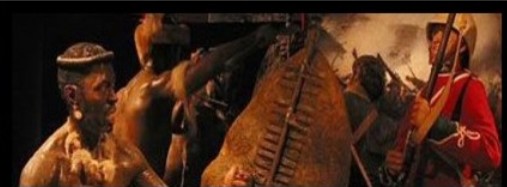| Latest topics | » The Pictorial World - March 15th 1879 Yesterday at 1:13 pm by ben2000 » The lost diary of Pvt James Owen Thu Jul 25, 2024 12:03 pm by miklew » Last of the 24th at Isandhlwana Wed Jul 24, 2024 6:16 pm by John Young » What was the uniform of field marshals/generals in the zulu war? Mon Jul 22, 2024 6:53 am by John Young » Henderson and the NNH at Rorke's Drift  Sat Jul 20, 2024 12:17 pm by SRB1965 » Capt. D. Hayes 1/3rd Regt., NNC Thu Jul 18, 2024 11:11 am by Julian Whybra » The Wrecked Camp Wed Jul 17, 2024 4:33 pm by Julian Whybra » Private N/N John Robert Branch 90th Regiment and his discovered diary Mon Jul 15, 2024 8:53 pm by 1879graves » Private John Scott 24th Regiment a fugitive at large Sun Jul 14, 2024 12:06 pm by 1879graves » 90th foot sgt T. Collins 214 Sun Jul 14, 2024 10:57 am by johnman » Baron Von Steitencron Wed Jul 10, 2024 3:10 pm by Julian Whybra » Sgt Joseph Windridge, Defender of Rorke's Drift - Memorial Tue Jul 09, 2024 3:15 am by 90th » Writing advice Sun Jul 07, 2024 4:04 pm by Julian Whybra » South Africa 1877-79, 1 clasp, 1877-8-9 (4389 Fr. Sergt. S. Smith. O/2. Bde. R.A.) Sun Jul 07, 2024 9:30 am by rai » The trashing of the Zulu monument to the brave warriors at Isandlawana March 12, 2024 has been blamed on scrap metal scavengers. Thu Jul 04, 2024 7:41 pm by ADMIN» The Goodwill Zulu Festival: Celebrating the Welsh and KwaZulu Natal Shared Heritage. Thu Jul 04, 2024 7:27 pm by ADMIN» Any nominal role of G Coy 2/24th regiment  Thu Jul 04, 2024 11:18 am by Wayne » Bassage Diary Thu Jul 04, 2024 9:31 am by Julian Whybra » Prior to Sihayo's Kraal  Thu Jul 04, 2024 9:19 am by 90th » British Fort Locations Thu Jul 04, 2024 3:40 am by 90th » Sergeant 1064 Tom Hick / Hicks G Company 2/24th Regiment Wed Jul 03, 2024 11:05 am by Julian Whybra » A Hungarian soldier in the Zulu War (?) Fri Jun 28, 2024 2:31 pm by Mr M. Cooper » Private 25B/279 Henry Sears Bugler E Company 24th Reg. KIA Isandlwana Thu Jun 27, 2024 1:07 pm by gardner1879 » Hamilton Browne's birthday Fri Jun 21, 2024 9:22 am by Julian Whybra » Zulu "Corps" Thu Jun 20, 2024 6:01 pm by Hobbes » Army Pay Department Personnel Thu Jun 20, 2024 11:49 am by Julian Whybra » Ntshingwayo birth date Sun Jun 16, 2024 11:37 am by Hobbes » Zibhebhu and Cetshwayo's family Wed Jun 05, 2024 9:11 pm by Julian Whybra » Smith's Store/Hotel Wed Jun 05, 2024 6:06 pm by Julian Whybra » Corporal James Frowen Williams F Company.  Tue Jun 04, 2024 5:20 pm by Julian Whybra » Shaka iLembe Sat Jun 01, 2024 1:27 pm by Jon84 » Bugler 1415 Thomas Finn / Flin 90th Regiment  Sat May 25, 2024 11:28 am by johnman » Inspector-General Evelyn Richard Hugh Pollard Tue May 14, 2024 10:13 am by ADMIN» Alfred Fairlie Henderson photographs. Sat May 11, 2024 8:01 am by Julian Whybra » Fairlie's Native Police Thu May 02, 2024 9:12 pm by Hobbes |
| July 2024 | | Mon | Tue | Wed | Thu | Fri | Sat | Sun |
|---|
| 1 | 2 | 3 | 4 | 5 | 6 | 7 | | 8 | 9 | 10 | 11 | 12 | 13 | 14 | | 15 | 16 | 17 | 18 | 19 | 20 | 21 | | 22 | 23 | 24 | 25 | 26 | 27 | 28 | | 29 | 30 | 31 | | | | |  Calendar Calendar |
|
| Top posting users this month | |
| New topics | » The Pictorial World - March 15th 1879 Yesterday at 1:13 pm by ben2000 » The lost diary of Pvt James Owen Thu Jul 25, 2024 12:03 pm by miklew » Last of the 24th at Isandhlwana Wed Jul 24, 2024 5:53 pm by miklew » What was the uniform of field marshals/generals in the zulu war? Sun Jul 21, 2024 12:30 pm by darthvaix » Henderson and the NNH at Rorke's Drift  Fri Jul 19, 2024 1:29 pm by SRB1965 » Capt. D. Hayes 1/3rd Regt., NNC Wed Jul 17, 2024 10:52 pm by Julian Whybra » The Wrecked Camp Sun Jul 14, 2024 8:51 am by 61MECH » The trashing of the Zulu monument to the brave warriors at Isandlawana March 12, 2024 has been blamed on scrap metal scavengers. Thu Jul 04, 2024 7:41 pm by ADMIN» The Goodwill Zulu Festival: Celebrating the Welsh and KwaZulu Natal Shared Heritage. Thu Jul 04, 2024 7:27 pm by ADMIN |
| Zero tolerance to harassment and bullying. | |
Due to recent events on this forum, we have now imposed a zero tolerance to harassment and bullying. All reports will be treated seriously, and will lead to a permanent ban of both membership and IP address.
Any member blatantly corresponding in a deliberate and provoking manner will be removed from the forum as quickly as possible after the event.
If any members are being harassed behind the scenes PM facility by any member/s here at 1879zuluwar.com please do not hesitate to forward the offending text.
We are all here to communicate and enjoy the various discussions and information on the Anglo Zulu War of 1879. Opinions will vary, you will agree and disagree with one another, we will have debates, and so it goes.
There is no excuse for harassment or bullying of anyone by another person on this site.
The above applies to the main frame areas of the forum.
The ring which is the last section on the forum, is available to those members who wish to partake in slagging matches. That section cannot be viewed by guests and only viewed by members that wish to do so. |
| Fair Use Notice | | Fair use notice.
This website may contain copyrighted material the use of which has not been specifically authorised by the copyright owner.
We are making such material and images are available in our efforts to advance the understanding of the “Anglo Zulu War of 1879. For educational & recreational purposes.
We believe this constitutes a 'fair use' of any such copyrighted material, as provided for in UK copyright law. The information is purely for educational and research purposes only. No profit is made from any part of this website.
If you hold the copyright on any material on the site, or material refers to you, and you would like it to be removed, please let us know and we will work with you to reach a resolution. |
| | | Nothing Of Value. |  |
| | | Author | Message |
|---|
sas1
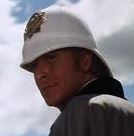
Posts : 627
Join date : 2009-01-20
Age : 46
 |  Subject: Nothing Of Value. Subject: Nothing Of Value.  Wed Feb 16, 2011 12:15 am Wed Feb 16, 2011 12:15 am | |
| Some of you may find this little artical interesting. I did...
Nothing of Value Click Here |
|   | | littlehand
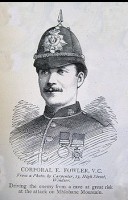
Posts : 7076
Join date : 2009-04-24
Age : 55
Location : Down South.
 |  Subject: Re: Nothing Of Value. Subject: Re: Nothing Of Value.  Wed Feb 16, 2011 12:48 am Wed Feb 16, 2011 12:48 am | |
| Thanks sas1. Great read. [You must be registered and logged in to see this image.]"Philip Robert Anstruther (1841- 1880) was a member of the Scottish family of Anstruther of Balcaskie. He was commissioned as an ensign in the 94th Regiment of Foot (Connaught Rangers) on 31 December 1858. In 1870 he married Zaida Mary, the eldest daughter of Sir Thomas Erskine of Cambo, Fife. The couple had two sons. Lt Col Anstruther died of wounds,having been ambushed by the Boers at Bronkhorstspruit on 20th December 1880. He saw a lot of action in a short time in South Africa. A major in the 94th Regiment of Foot, he fought at Ulundi in the Zulu War in 1879 and, later in the year against, Chief Sekhukhune in the Transvaal. When war with the Transvaal Republicans broke out in 1880 he was severely wounded in a skirmish near Bronkhorstspruit and died of his wounds on 26th December.
Philip Robert Anstruther of the 94th Regiment of Foot wrote of Ulundi 'We walked about burning the whole place and picked up shields and assegais. I got five shields & 2 assegais - could not carry more. He wrote again a few days later describing some shields he was sending home: 'The shields … 4 of them are quite new and are made out of the king's cattle and are the ones chiefs carry … I picked up a lot of shields, assegais & guns but could not carry them and had to drop them all again except the small shields & assegais.' An observation that probably best describes this sweeping collecting is in a letter home written by Major (later Lieutenant-Colonel) Arthur Harness of the Royal Artillery:
Major Anstruther, who took part in the campaign against Sekhukhune, principal chief of the Pedi people, near Lydenburg in December 1879, recalled that they took 'a magnificent elephant's tusk out of Sekukuni's kraal, weighs 62 lbs and we are going to have it made into a snuff box. I think we have now about a dozen snuff boxes of sorts in the mess but this one will take 2 men to carry it round.'45 It was mounted in silver and presented to the Officers' Mess of the 94th Regiment by Lt Col Murray where it remained until the disbanding of the Connaught Rangers in 1922 and was transferred to the National Army Museum.)Just after the Anglo-Zulu War, Anstruther wrote home that hewas 'sending … 5 shields, some assegais, 3 or 4' and a mat and suggested that his family should 'put a pedestal on to the bottom of the sticks' because 'they would make nice fire screens for the dining room'.Sir Bartle Frere had similar thoughts and in later years exhibited a 'Fire Screen made of a small Zulu shield, picked up by the exhibitor on the battlefield of Ulundi'. The symbolism of Zulu shields is aptly illustrated by the use of five replicas in a screen in Litchfield Cathedral installed to commemorate the soldiers of the 80th Regiment who died in the war.
Philip Robert Anstruther of the 94th Regiment of Foot wrote home on 12 August 1879 that 'a lot of Zulus have come, I should think nearly 500 and have given up arms & assegais & cows … I got six assegais but they are not very good ones as I was late in choosing.' Nine days later he wrote that he had 'got some more assegais and am trying to get some chiefs' sticks for general distribution'. A few days later he concluded that he now had '8 assegais' and was 'waiting for an opportunity to send them home' In the days before the battle of Ulundi, Fleet Surgeon Henry F Norbury writes of the surrender of 'some 600 Zulus, about 240 of whom were men; they brought with them 53 guns, and a large number of assegais"'Source'Both curious and valuable':African art from late 19th-century south-east Africa |
|   | | littlehand

Posts : 7076
Join date : 2009-04-24
Age : 55
Location : Down South.
 |  Subject: Re: Nothing Of Value. Subject: Re: Nothing Of Value.  Wed Feb 16, 2011 12:56 am Wed Feb 16, 2011 12:56 am | |
| [You must be registered and logged in to see this image.]"The above image of the smart British soldier soon disappeared once on campaign. Taking the 94th Regiment as an example of a typical unit, they had embarked from England in February 1879, and had worn the same tunics and trousers from then right through the Zulu War and the campaign against Sekhukhune. It seems that new tunics and trousers were received sometime in 1880, but a description by Brevet Lieutenant Colonel Philip Anstruther, 94th Regiment, of his men prior to the arrival of this consignment conjures up a vivid picture of a regiment in the field: 'Their coats and trousers are all colours -cords, blue serge, red ditto, any mufti they can lay their hands on patched all over with sacking, skin or anything.' It seems that their equipment also suffered from fatigue, and helmets had not been replaced prior to the outbreak of war. The white helmets that had looked so pristine and smart when the 94th left England were now hardly recognisable as head wear. Some crumpled examples survived, but many men wore anything they could buy, find or make from skins". |
|   | | tasker224

Posts : 2101
Join date : 2010-07-30
Age : 57
Location : North London
 |  Subject: Re: Nothing Of Value. Subject: Re: Nothing Of Value.  Fri Feb 18, 2011 6:40 pm Fri Feb 18, 2011 6:40 pm | |
| The article mentions "military trophies" and "souvenirs" then in another breath, "looting". (I am not sure what point the article is trying to make here).
The taking of helmets, arms, badges and the like from slain foe has always and will always happen. It is even expected. Even though a remf myself in Iraq and Afghanistan and unlikely to have happened to me, I always made sure that when deployed, I had nothing on me that I would want to lose, even in death, such as my wedding ring, diary, personal info etc.
I would think of an enemy taking my helmet, weapon or anything else off me as no different to swapping shirts at the end of a rugby match.
This is certainly not "looting" - looting would be the theft of the property of civilians - an entirley different matter.
|
|   | | tasker224

Posts : 2101
Join date : 2010-07-30
Age : 57
Location : North London
 |  Subject: Re: Nothing Of Value. Subject: Re: Nothing Of Value.  Sat Feb 19, 2011 8:38 am Sat Feb 19, 2011 8:38 am | |
| |
|   | | 90th
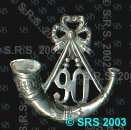
Posts : 10890
Join date : 2009-04-07
Age : 68
Location : Melbourne, Australia
 |  Subject: nothing of value Subject: nothing of value  Sat Feb 19, 2011 7:18 pm Sat Feb 19, 2011 7:18 pm | |
| Hi sa1 .
Good find , I also thought it an interesting and informative read .
cheers 90th. |
|   | | 24th
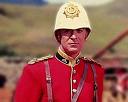
Posts : 1862
Join date : 2009-03-25
 |  Subject: Re: Nothing Of Value. Subject: Re: Nothing Of Value.  Sat Feb 19, 2011 9:20 pm Sat Feb 19, 2011 9:20 pm | |
| It seems Philip Robert Anstruther, was more of a collector than a soldier. |
|   | | JohnB
Posts : 95
Join date : 2010-01-10
Age : 72
Location : Taunton
 |  Subject: Re: Nothing Of Value. Subject: Re: Nothing Of Value.  Mon Mar 07, 2011 8:48 am Mon Mar 07, 2011 8:48 am | |
| Here is a further excellent article on the same theme. Although it extends to other wars during the same period its main content relates to the Zulu war.
http://www.michaelstevenson.com/africanart/essay.htm |
|   | | 90th

Posts : 10890
Join date : 2009-04-07
Age : 68
Location : Melbourne, Australia
 |  Subject: nothing of value Subject: nothing of value  Tue Mar 08, 2011 5:23 am Tue Mar 08, 2011 5:23 am | |
| Hi JohnB. Great article and very interesting , a good find !. cheers 90th.  |
|   | | Teld
Posts : 20
Join date : 2010-05-21
Age : 57
Location : Corby
 |  Subject: Re: Nothing Of Value. Subject: Re: Nothing Of Value.  Wed Mar 09, 2011 7:09 pm Wed Mar 09, 2011 7:09 pm | |
| A great read and very intresting , thanks for posting it.  |
|   | | | | Nothing Of Value. |  |
|
| | Permissions in this forum: | You cannot reply to topics in this forum
| |
| |
| |
